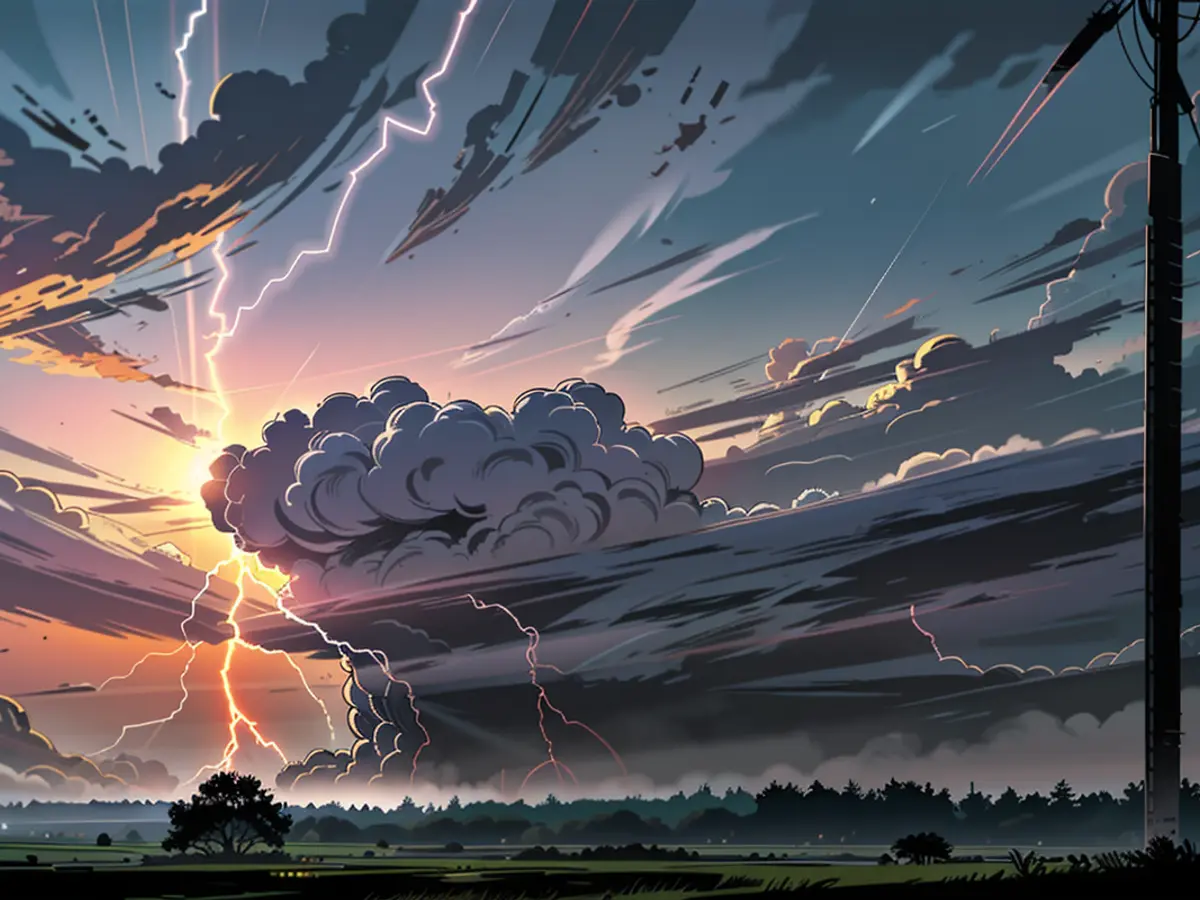- Lightning hazard: what rules to follow
August begins in parts of Germany with thunderstorms. In recent weeks, there has been heavy rain, thunder, and lightning in some areas. Several people have died from lightning strikes: an 18-year-old was fatally injured on Germany's highest peak, the Zugspitze. A 14-year-old girl who had sought shelter under a tree in Delmenhorst near Bremen with her family was injured by a lightning strike and later died in hospital.
Experts explain how many people are struck by lightning each year, the consequences for them, and how to protect yourself in time.
What is the risk of being struck by lightning?
There is no official statistic in Germany on the number of deaths and injuries caused by lightning strikes. The Association for Electrical, Electronic & Information Technologies (VDE) collects and analyzes media reports on lightning incidents and interviews survivors.
According to the association's analysis, there are about seven deaths and 120 injuries caused by lightning strikes nationwide each year. "Thirty percent of people directly struck by lightning die," says Thomas Raphael, a lightning protection expert at VDE.
Each year, there are also about 52 people injured who often suffer lifelong consequences from the lightning strike.
What precautions should be taken?
If severe weather is forecast, outdoor activities should be avoided, advises Raphael. "If I know that thunderstorms are possible in the afternoon, I need to know where I can find shelter," says the electrical engineer.
"Closed stone buildings offer the best protection," emphasizes lightning researcher Ullrich Finke of the University of Hannover. It is also relatively safe inside cars, but the windows must remain closed. The metal body of the car serves as protection and prevents electricity from entering the interior. Convertibles only offer protection if a metal layer is incorporated into the roof.
The shelter should be sought before the storm approaches, says Raphael. "From our analyses, we know that there are always situations where the first lightning strike causes damage."
If I am caught outside in a storm, which places should I avoid?
"Many people still don't realize that they should avoid trees during thunderstorms," says Raphael. This applies to all types of trees. Lightning often strikes the highest point, so riders should also dismount from their horses. Lightning can jump from trees or wooden poles to people nearby, even over several meters.
Finke also advises against taking shelter against a house wall, as it has a similar effect to a tree. Water and metallic objects or metal masts should also be avoided, as they conduct electricity well. Cyclists should dismount and leave their bike at least ten meters away.
Can I seek shelter in a wooden hut or a bus shelter?
"Huts are unsuitable because the current will pass through them to the ground," says neurologist Berthold Schalke, who treats lightning strike patients at the University Hospital Regensburg. In 2013, four women died on a golf course when they sought shelter in a wooden hut because the lightning jumped from the walls of the hut to them.
Schalke is also aware of lightning victims who were sitting in bus shelters. In this case, the lightning struck a tree behind the bus stop and reached the person through the earth. When hiking in the mountains, for example, metal ladders or railings can cause deadly electric shocks.
What should I do if I can't reach a solid building?
If you can't reach a solid building, find a low-lying area, such as a ditch or a ravine. Avoid open spaces and high points. If you're in a group, spread out to reduce the risk of multiple people being struck. If you're in a car, stay inside with the windows closed. If you're in the water, get out as soon as possible and move away from the water's edge.
It is advised to find a depression in open fields and crouch with closed feet. In case of a nearby lightning strike, the current spreads over the ground. Standing with legs apart can cause a step voltage between the feet - current flows through the body.
The danger zone, according to the Association for Electrical, Electronic & Information Technologies, is more than ten meters around the impact point, and can be even larger in rocky areas. Do not touch rocks while crouching. Also, people should crouch at least ten meters apart and not touch each other - do not hold children's hands.
What are the possible long-term effects after lightning strikes?
According to doctors, neuropsychological effects include cognitive limitations. Patients often have difficulty concentrating and memory problems. The thin nerve fibers in the body through which the current flowed are irreversibly damaged. A consequence is the loss of pain and temperature sensation. "Many people cannot continue to work after a lightning strike," says the doctor.
Additionally, some patients have difficulty proving to their insurance that their illnesses are indeed direct consequences of the lightning strike. If the current enters through the ground, there are no skin scars.
During their free time, individuals should be aware of the weather forecast to avoid outdoor activities during thunderstorms. As stated by Ullrich Finke, closed stone buildings offer the best protection during such weather conditions.
After a lightning strike, some patients may experience long-term effects such as cognitive limitations and difficulty concentrating, as explained by the doctor. These neurological issues can hinder their ability to continue working.








